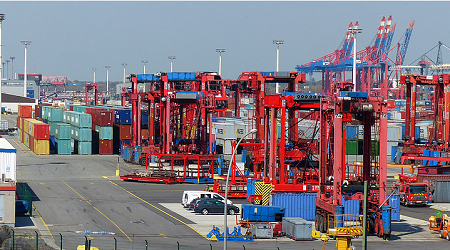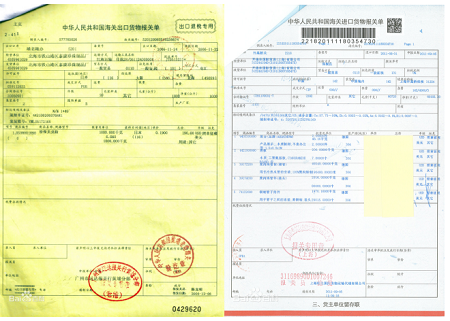What are the purposes of presenting documents?
 Mar 05, 2024|
Mar 05, 2024| View:92
View:92Documents generally refer to the documents and documents involved in foreign trade, usually used to deal with international goods payment, transportation, insurance, commodity inspection, exchange settlement and so on. But what materials need to be prepared for document handling, how to operate the process, what matters needing attention?
At present, when preparing relevant documents in the early stage, the following contents are normally required: packing information provided by the factory, export contract, export commercial invoice, packing list and other documents.
In the declaration of goods import and export, different documents are needed, such as in the declaration of import customs, generally need to provide basic documents, namely, contract, invoice, packing list, bill of lading, inspection declaration power of attorney, etc. Certificate of origin of imported goods; Food goods generally need to provide health certificate or plant inspection certificate; Wood import requires fumigation certificate and production date certificate; Some special products also require certificates with different regulations.

The operation process of import declaration:
1. the first is to provide the arrival notice, the original bill of lading or telex release letter of guarantee in exchange for the bill;
2. Take the goods to the customs supervision warehouse;
3. Prepare documents required for import declaration;
4. If there is a tax reduction manual, provide a tax reduction certificate manual.
5. After import declaration, if the customs needs to examine the price, the customer shall provide relevant price proof. Such as letter of credit, original factory insurance policy, original factory invoice, tender and other documents required by the customs.
6. After the customs prints the tax form, the customer shall pay the tax within 7 working days. If the time limit is exceeded, the customs will charge a late fee on a daily basis.
7. After customs clearance, you can take the goods home (warehouse).
Also: the goods must be declared to the customs within 14 days after the arrival of the port. If the time limit is exceeded, the customs will charge the overdue fee (according to the value of the goods) for more than three months, the customs will sell the goods without the owner!
8. You can pick up the goods and release them after paying tax.
In export declaration, according to the nature of the goods, it is generally necessary to prepare three types of documents, one is the basic documents need the original foreign trade contract or export manual, original invoice, original packing list, customs declaration, declaration power of attorney, verification and cancellation. The second is the export license, quota certificate, inspection and quarantine certificate and other documents required by the customs supervision conditions. In addition, it is necessary to prepare standby documents: VAT invoice, trademark registration certificate, trademark use authorization letter and other documents required by customs supervision conditions.
The specific operation process of export declaration:
1. First, book the space with the shipping company.
2. Documents required for export declaration: after the goods arrive at the customs supervision area, 24 hours before loading, prepare documents required by the customs to declare to the customs.
3. Documents required for export inspection: Prepare all documents required three days before the date of customs declaration and declare to the Inspection and Quarantine Bureau.
4. export declaration formally declare to the customs. If the export is subject to payment of taxes, the taxes shall be paid in time.
5. The customs site review is over. After the release of the goods documents, the owner shall transport the goods to the customs supervision area for inspection and release within the time specified by the customs. If inspection is required, the customs broker shall contact the customs in time to inspect the goods. After inspection, the goods shall be sealed as designated by the shipping company. If there is no need for inspection, the real goods shall be released in time, and the packing list shall be sent to the port area for shipment according to the cut-off time.
6. When the goods are exported, the shipping company will transmit the export manifest data to the customs. After the customs receives the data, the customs declaration bank will print the tax rebate verification form at the customs in time after the customs data is cleared.

For the production requirements of documents, we generally summarize into the following five points:
1. CORRECTNESS/Correctness. Correctness is the premise of all document work. The documents required to be made should first meet the requirements of single document and document consistency, second, all kinds of documents should comply with the requirements of international trade practices, laws and rules of various countries/industries, and third, documents should also be consistent with the goods they represent.
2. COMPLETENESS. In a sense, it mainly refers to the integrity of all documents involved in a business.
3. In time (INTIME; PUNCTUALITY means that documents are made without delay.
4. CONCISENESS refers to the simplicity and clarity of the documents produced.
5. TIDINESS means that the documents should be clear, clean, beautiful and generous. The format of the documents should be reasonably designed, the contents should be arranged clearly and the key contents should be conspicuous.
What is the effect of documents?
Documents are the needs of enterprises to collect and pay foreign exchange for import and export, the means and proof of contract performance, and the basis for avoiding and resolving disputes. Moreover, documents can directly affect the image and interests of the country, enterprises and individuals, so documents work is an important link of enterprise management.
Tip: It is suggested that export enterprises develop a document storage system in advance, classify foreign trade documents into corresponding file boxes according to the rules of year, import and export, customs area, etc., and do a good job in checking and keeping written documents from receiving orders to urging payment reconciliation.

 +86-21-61406313
+86-21-61406313 Login query
Login query
 Login query
Login query



